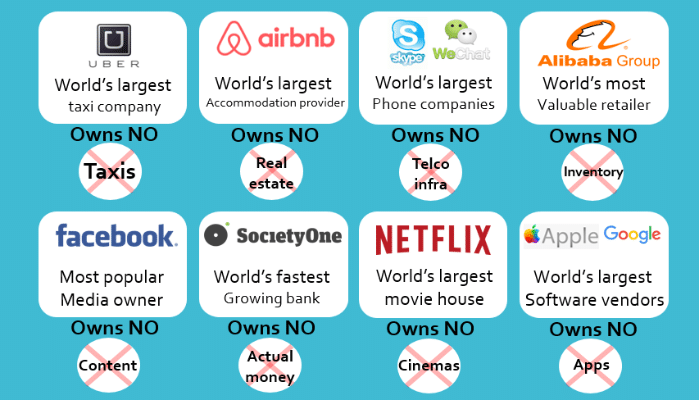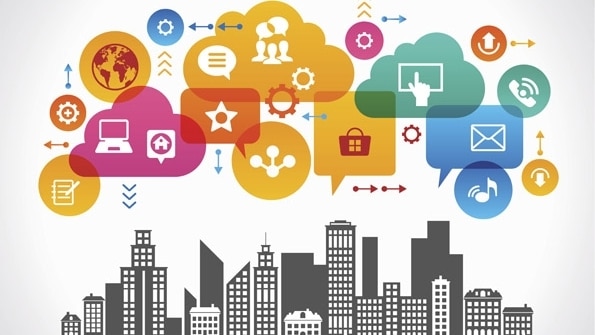What’s Next for Digital Disruption?
(Editor’s note: the following post originally appeared in FreshBusinessThinking.com)
This year marks the tenth birthday of the first iPhone, and what a decade it’s been for new technology changing the way we live our lives. Along with Apple, brands such as Airbnb, Netflix and Amazon have become synonymous with disruptive tech. They have thrown down the gauntlet for change on a global scale; transforming the way we book holidays, consume media and order our shopping, taxis and takeaways.
Although the apps themselves are disruptive, the services and products these brands provide are actually very every day. And that’s where their beauty lies: they have radically changed normal consumer behavior. What they have done differently is not only meet the basic needs of customers, but had the vision to pre-empt ways to shake up how we live our lives. That’s pretty powerful.
So what does all this mean for the customer experience – and what can other businesses learn from these trailblazers?
Learning from the disruptors
All businesses today need to anticipate and adapt to change. The best of them create change. Many “status quo” brands consistently tell their customers what features and functionalities they need in a solution. Disruptive brands do more than this. Of course they deliver what the customer needs from them, but they take this one step further by creating an experience for their customers that is unique and exciting.
Try to think of booking a taxi without your mind wondering to the Uber app on your phone. Difficult isn’t it? Uber has done what all businesses strive to do: it’s become synonymous with the industry it represents.
The idea of delivering what the customer needs versus what he says he wants—and using digital technology to create a unique customer experience—has led to some incredible stories of disruption. Netflix is a perfect example of this. It started as a DVD-by-mail business in 1998, and, as technology caught up, it launched into streaming media and video-on-demand online.
By leveraging transformational digital technology and focusing squarely on the customer experience (i.e. making movie rentals easier and more convenient), Netflix displaced almost all of its competitors in one fell swoop. More recently, Netflix again disrupted the television-watching experience. Understanding consumers’ affinity for binge-watching content, they now release entire seasons at one time.
This is why disruptors such as Netflix have enjoyed so much success. They don’t disrupt once and then stop. They’re constantly evolving to improve their products and services, responding to customers’ existing behavior – and then finding ways to influence how they’ll behave next. Interestingly, Netflix now faces competition of its own such as Amazon and Hulu – disruption never stops.

Adapting the workforce
Of course, digital disruption isn’t just about consumers. It’s also about driving change within the workplace of the organizations that want to evolve and stand out. This may mean that new roles are needed to map the transition from ‘old ways’ of doing things, to ‘new ways’.
At a Gartner event, Apple co-founder Steve Wozniak urged businesses to consider implementing a Chief Disruption Officer, because companies need “someone to look out for what is coming, for what might disrupt your own business”. When this comes from a man who helped launch perhaps the most groundbreaking consumer tech company of the past century, you know you need to listen what he has to say.
There has also been a growing place for the role of the Chief Customer Officer in recent years, as organizations strive to form a truly customer-centric view of their business. But it’s not just about a member of the C-suite deciding on a new strategy, it’s about implementing the strategy across all divisions and uniting a corporate mindset that embraces evolution. It’s clear that the first priority for businesses is breaking out of a silo mentality that still exists in so many workplaces; Adobe research found 41% of marketing departments don’t think they work well with other business functions.
The need for integration is especially important when it comes to businesses that are customer-facing, because, while technology has played a critical part in all of these stories, it can’t spark disruption on its own. There’s little point in investing funds and resource into technological change if the front-end experience isn’t also improved or refreshed. Businesses need to ask themselves: how will this technology not only improve internal processes but deliver our services in the best way to our customers?
Don’t forget the customer experience
Customers need to know that, regardless of the channel they choose to interact with an organization – in person, over the phone, on Twitter – they’ll receive the same level of service and understanding of their needs and expectations. This all amounts to the overall customer experience, which is absolutely critical at a time when customers are faced with a proliferation of choice. In fact, research by Gartner found 89 percent of companies now believe that the customer experience they can offer is the most important benchmark by which they are judged.
This means that all customer-facing teams (sales, marketing, customer service and so on) need to have the right tools to identify their customers amidst a sea of data. Having complete control of customer data and confidence in how to decipher it will all help to deliver a seamless customer experience. Behind every innovative leap forward towards digital transformation should be a solid back-end system that contains customer data in a consolidated and easily accessible way.
The future of digital disruption
I have no doubt ‘the next big thing’ is just around the corner, ready to transform a part of our lives which we had no idea even needed to be changed. This unpredictability is what’s exciting about technology today. But, for every disruptive brand that’s succeeded, there are thousands that fail. I believe the businesses that are able to develop technology which has a real, useful impact on consumers’ lives – and is able to deliver a great customer experience across all channels – will be most likely to enjoy long-term success.


